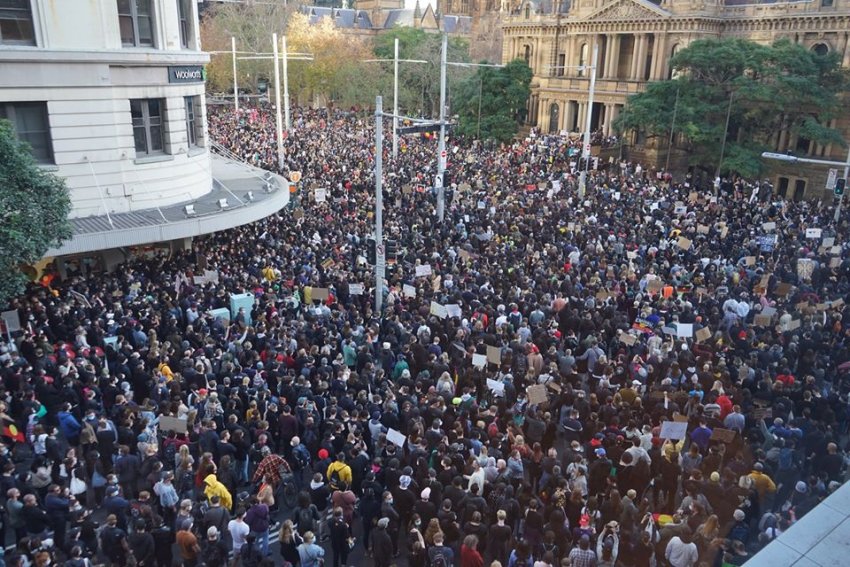
The huge size of the Black Lives Matter protests across Australia on June 6 took everyone by surprise. These was the first nationwide protest since the COVID-19 shutdown.
The organisers of the Sydney rally — Indigenous Social Justice Association, Anticolonial Asian Alliance and USYD Autonomous Collective Against Racism — went to great lengths to help participants to stay safe. Yet the NSW Police took them to court to try and stop the protest — or at least scare people from turning up.
But it backfired. Estimates of the size vary, but organisers have put it at around 50,000. What was clear, though, is that it was huge, overwhelmingly young and angry.
Speakers included Dunghutti woman Leetona Dungay, the mother of David Dungay Jr who was killed in custody in 2015 and whose last words were also “I can't breathe”.
Leetona was determined that the rally would go ahead, despite the NSW Police and state government trying to put a stop to it, using the coronavirus as the excuse. “Justice won't wait”, she said.
The Supreme Court decided the previous day it was unlawful to protest. That broadcast seemed to have made a lot of people more determined to attend.
And just as the march was about to leave, we were told that a Court of Appeal had overturned the decision. But it was the “court of the streets” that had already made the decision that the rally was proceeding.
Speakers drew the similarity between the death of African American man George Floyd and Aboriginal deaths in custody here. There have been at least 432 Indigenous deaths in custody in Australia since 1991, and not one conviction for these deaths.
The size of the rallies and the mood at them indicates that the Black Lives Matter movement has a strong reasonance in Australia.
[Send your best protest photo to editor@greenleft.org.au with a caption and we'll add it to a national round-up.]